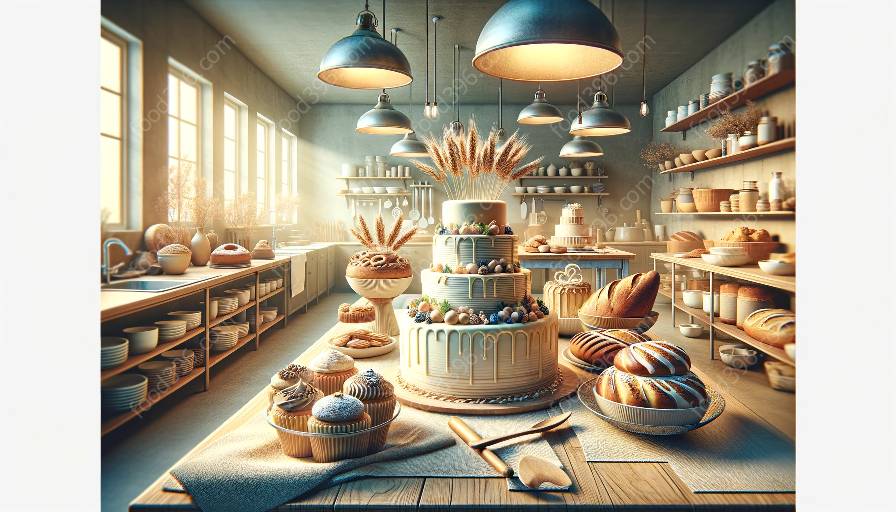Gluten-free baked goods have gained popularity in recent years due to the increasing awareness of gluten sensitivities and celiac disease. Creating texture and structure in gluten-free baked goods can be challenging, but with the right techniques and understanding of baking science & technology, delicious gluten-free treats can be achieved.
Understanding Gluten-Free Baking
Gluten is a protein found in wheat, barley, and rye that provides elasticity and structure to baked goods. In gluten-free baking, the absence of gluten can lead to baked goods that are crumbly, dry, and lack structure. However, by utilizing alternative ingredients and innovative techniques, it is possible to achieve excellent texture and structure in gluten-free baked goods.
Key Ingredients and Substitutions
Several key ingredients and substitutions are commonly used in gluten-free baking to overcome the challenges posed by the absence of gluten:
- Alternative flours: Almond flour, coconut flour, rice flour, and chickpea flour are popular alternatives to traditional wheat flour. Each type of flour has its unique properties and flavors, which can significantly impact the texture of the final baked product.
- Binders: Xanthan gum and guar gum are often added to gluten-free baked goods to mimic the binding properties of gluten. These binders help improve the structure and elasticity of the dough, resulting in a better texture.
- Liquid ingredients: Including higher proportions of liquid ingredients such as eggs, dairy, or plant-based milk can contribute to moisture and tenderness in gluten-free baked goods.
- Leavening agents: Baking powder and baking soda are essential for achieving proper rise and structure in gluten-free baked goods. Understanding the appropriate use of leavening agents is crucial for achieving the desired texture.
Baking Science & Technology
Applying baking science and technology principles is essential for achieving texture and structure in gluten-free baked goods. Understanding the impact of ingredients, temperature, mixing methods, and baking techniques can significantly influence the final product:
- Ingredient interactions: Knowledge of how different ingredients interact with one another is crucial in gluten-free baking. Understanding the role of fats, sugars, liquids, and leavening agents can help in achieving the desired texture and structure.
- Mixing methods: Utilizing appropriate mixing methods such as creaming, folding, or whisking can impact the aeration and structure of the batter, leading to better texture in the final product.
- Baking techniques: Adjusting baking time and temperature, as well as using appropriate baking pans and equipment, can greatly impact the texture and structure of gluten-free baked goods.
- Testing and experimentation: Conducting trials and experiments with different ingredient combinations and techniques can help in refining the process and achieving optimal texture and structure in gluten-free baked goods.
Techniques for Achieving Texture and Structure
There are several specific techniques that can be employed to achieve excellent texture and structure in gluten-free baked goods:
Pre-hydrating Flours
Pre-hydrating gluten-free flours by mixing them with liquid ingredients and allowing them to rest before incorporating them into the recipe can enhance moisture and texture in the final product.
Using Additives
Utilizing additives such as apple cider vinegar, yogurt, or fruit purees can contribute to the moisture and structural integrity of gluten-free baked goods.
Layering Techniques
Layering the batter with alternating textures or incorporating crumb toppings can create varied texture and structure in gluten-free baked goods, making them more appealing.
Steam Baking
Introducing steam during the baking process can help improve moisture retention and promote a desirable texture in gluten-free baked goods.
Conclusion
Achieving excellent texture and structure in gluten-free baked goods requires a combination of specialized ingredients, understanding of baking science & technology, and innovative techniques. By exploring and experimenting with different methods, bakers can create delicious gluten-free treats that rival their traditional counterparts in both texture and taste.

